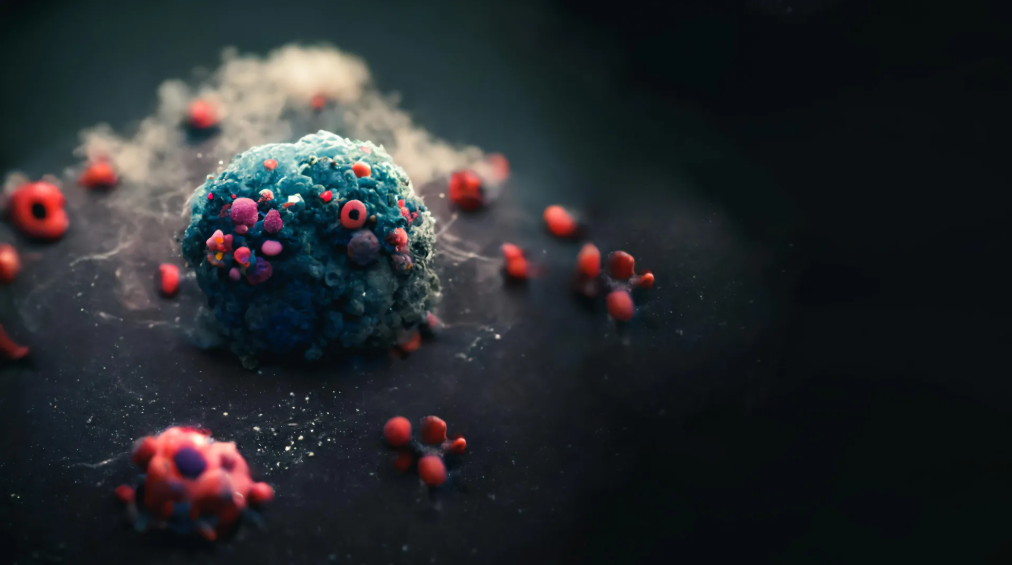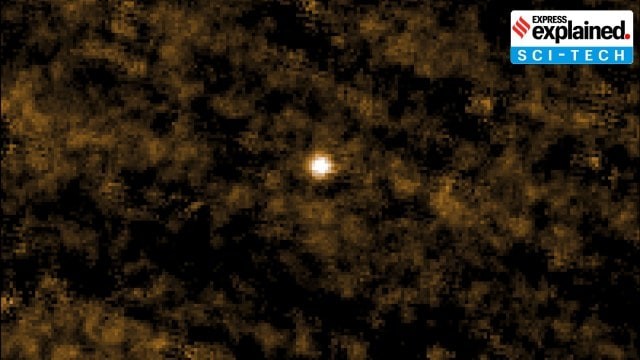



Researchers at Northwestern University have redesigned a common chemotherapy drug using nanotechnology, making it up to 20,000 times more effective against cancer while minimizing side effects. By embedding the drug into spherical nucleic acids, the therapy targets cancer cells precisely, improving absorption and potency. This breakthrough could revolutionize cancer treatment and pave the way for advanced nanomedicine applications in oncology and beyond.

Copyright infringement not intended
Picture Courtesy: Science Daily
Researchers at Northwestern University have redesigned a traditional chemotherapy drug, 5-fluorouracil (5-Fu), using spherical nucleic acids (SNAs)—tiny DNA-coated nanoparticles. This innovation transforms the drug into a highly targeted therapy that cancer cells absorb naturally, boosting its effectiveness up to 20,000 times while avoiding damage to healthy cells.
Nanotechnology is the branch of science and engineering that deals with manipulating matter at an extremely small scale, typically between 1 and 100 nanometres (a nanometre is one-billionth of a meter). At this scale, materials often exhibit unique physical, chemical, and biological properties—like increased strength, chemical reactivity, or conductivity—that differ from their larger-scale counterparts.
Conceptually, nanotechnology allows scientists to design, create, and use structures, devices, and systems at the molecular or atomic level to solve problems in medicine, electronics, energy, environment, and materials science.
For example:
Targeted Molecular Imaging: Nanoparticles can be engineered to bind specifically to cancer biomarkers or tumour cells. This allows imaging techniques like Magnetic Resonance Imaging (MRI), Positron Emission Tomography (PET), or Computed Tomography (CT) to detect tumours at earlier stages, even when they are too small to be seen with standard methods. Example: Gold nanoparticles or quantum dots can provide high-contrast imaging by accumulating in cancerous tissues.
Enhanced Sensitivity in Biomarker Detection: Nanodevices can detect minute levels of cancer-associated molecules in blood, urine, or tissue samples. This improves the accuracy of liquid biopsies, enabling the detection of cancers before clinical symptoms appear. Example: Nano-biosensors can detect circulating tumour DNA or proteins at parts-per-billion concentrations.
Multifunctional Platforms: Nanoparticles can combine diagnostic and therapeutic functions, known as theragnostic. They can simultaneously identify cancer cells and deliver imaging agents or drugs, allowing personalized and precise monitoring.
Real-Time Monitoring: Nanotechnology allows continuous tracking of tumour progression or response to treatment at the cellular level. This is critical for adaptive therapy, where treatments are adjusted based on real-time tumour behaviour.
Overcoming Biological Barriers: Traditional diagnostic agents often fail to reach tumours due to poor solubility or low circulation time. Nanocarriers improve stability, targeting, and penetration of imaging agents, especially in hard-to-reach tissues.
Safety and Toxicity: Nanoparticles, while promising, can accumulate in organs such as the liver, spleen, and kidneys. The long-term effects of such accumulation remain unclear, raising concerns about organ damage and limiting clinical adoption. Addressing this requires rigorous biocompatibility testing and the design of biodegradable nanoparticles.
Complexity of Design: Effective nanotechnology diagnostics demand precise control over particle size, shape, surface chemistry, and targeting capabilities. This technical complexity can lead to variability in efficacy and stability. Advancements in fabrication techniques and standardized protocols are essential to overcome this challenge.
Targeting Specificity: Differentiating cancer cells from healthy cells is a major hurdle. Inadequate targeting can lead to off-target effects and reduced diagnostic accuracy. Functionalizing nanoparticles with specific ligands and employing multi-modal targeting strategies can improve specificity.
Regulatory and Standardization Issues: The lack of uniform clinical guidelines and regulatory pathways delays approvals and can result in inconsistent quality of nanotechnology diagnostics. Developing clear regulatory frameworks and international standardization is crucial for clinical translation.
Cost and Scalability: High production costs and technical complexity limit accessibility, making diagnostic tests expensive. Optimizing synthesis methods and scaling up manufacturing processes are necessary to make nanotechnology-based diagnostics more widely available.
Stability and Storage: Nanoparticles may degrade or aggregate over time, reducing the reliability of diagnostic results. Stabilization techniques and proper storage protocols are required to maintain functionality.
Integration with Existing Systems: Nanotechnology-based diagnostics may face compatibility issues with current imaging or laboratory infrastructure, limiting adoption in clinical settings. Developing hybrid systems and standardizing imaging protocols can help overcome this barrier.
Ethical and Social Concerns: Overdiagnosis, patient anxiety, and public perception of nanotechnology pose ethical and social challenges. Clear ethical guidelines, public education, and informed consent protocols are necessary to address these concerns.
Enhancing Safety: Focus on biodegradable and non-toxic nanoparticles to reduce long-term organ accumulation and ensure clinical safety.
Improving Targeting: Functionalize nanoparticles with tumour-specific ligands or antibodies for precise detection, and explore theragnostic approaches combining diagnosis and therapy.
Standardization and Regulation: Develop clear global guidelines for nanoparticle synthesis, characterization, and clinical testing to ensure quality and accelerate approvals.
Scalability and Cost: Streamline production methods to lower costs and make nano diagnostics widely accessible.
Integration with Clinical Systems: Combine nanoparticle-based imaging with existing diagnostic tools for smoother adoption in hospitals and labs.
Data-Driven Optimization: Use AI and large-scale clinical trials to refine nanoparticle design and enhance diagnostic efficiency.
Public Awareness and Ethics: Educate patients about benefits and limitations, ensuring responsible use and reducing ethical concerns.
Global Collaboration: Share knowledge, resources, and protocols across countries to accelerate innovation and maximize patient impact.
Nanotechnology holds transformative potential in cancer diagnosis by enabling highly sensitive, precise, and targeted detection of tumours, often before symptoms appear. Despite challenges in safety, scalability, and regulatory standardization, advances in nanoparticle design, functionalization, and integration with AI-driven diagnostics promise more effective and less invasive detection methods. With focused research, ethical deployment, and global collaboration, nanotechnology can significantly improve early diagnosis, patient outcomes, and the overall efficiency of cancer care.
Source: Science Daily
|
Practice Question Q. Explain the concept of nanotechnology and discuss its potential applications in medicine, particularly in cancer diagnosis and treatment. Highlight the advantages, challenges, and future prospects of using nanotechnology in healthcare. (250 words) |
It allows drugs to specifically target cancer cells, reduces toxicity to healthy cells, increases drug absorption, and can make therapies thousands of times more effective.
It helps in targeted drug delivery, improved imaging for diagnostics, early detection of diseases, and the development of more effective therapies with fewer side effects.
Nanotechnology is the science of manipulating matter at the nanoscale (1–100 nanometres) to create materials and devices with unique physical, chemical, and biological properties.






© 2025 iasgyan. All right reserved